
Located at the southernmost tip of the African continent, South Africa is astoundingly diverse and breathtakingly beautiful. Its rugged coastline of beaches and sweeping ocean views is known for its rich marine life and is punctuated by the end-of-the-world Cape of Good Hope. It is also home to the dramatically sited cosmopolitan city of Cape Town as well as one of Africa’s best safari destinations, Kruger National Park and its outlying private concessions.
Cape Town
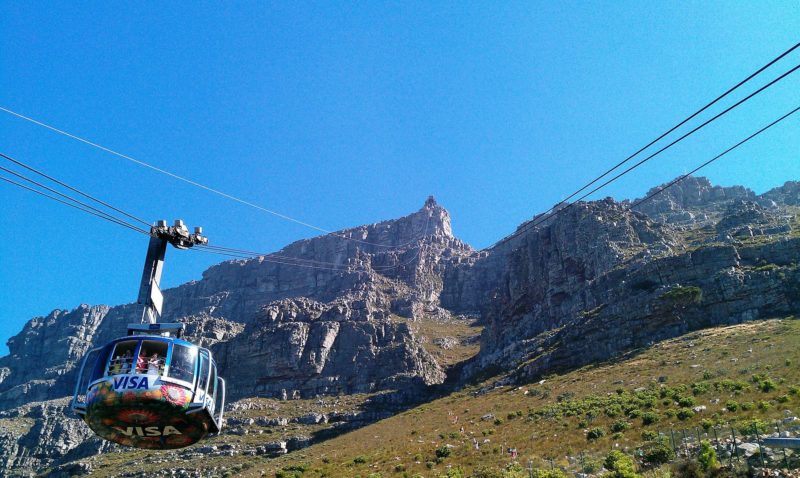
A cable car whisks visitors to the top of Cape Town’s iconic Table Mountain.
The beautifully sited cosmopolitan city of Cape Town, where Africa and Europe culturally collide at the tip of the continent, is the country’s oldest. Overlooking it is the iconic Table Mountain where you can take in the breathtaking panorama of blue skies and blue oceans. Cape Town enthralls visitors with its eclectic mix of Dutch, English, Malay, and African culture, encroaching wilderness, and nearby world-class vineyards. A safari may be your high point, but first make sure to visit a few of these highlights:
Bo-Kaap (formerly Malay Quarter)—The Bo-Kaap, on the slopes of Signal Hill and above the city center, is a historic suburb of Cape Town rich in Cape Malay culture. Cape Malays are descended from slaves first brought here from Indonesia and Malaysia as farm workers by the Dutch East India Company in 1657. Cobbled streets are lined with brightly painted houses, mosques, and some very popular restaurants.
Boulders Beach and Cape of Good Hope—More than 3,000 penguins rule the relatively warm waters of Boulders Beach and neighboring Foxy Beach, which are among the few places on earth where they occupy the mainland rather than an island. The distinctive black-and-white African penguins surf the waves, then comically waddle ashore to nest or to sun themselves. As long as you don’t get too close, you can observe their behavior from a number of wooden walkways.
District Six Museum—This “living memorial” tells the disturbing story of the forced displacement of 60,000 nonwhites living in a multicultural inner- city neighborhood from the late ’60s through the early ’80s. The Sixth Municipal District of Cape Town in 1867 began as a mixed community of freed slaves, merchants, artisans, laborers, and immigrants of all races—something not tolerated by the apartheid government who moved them all to remote “townships.”
Kirstenbosch National Botanical Gardens—Kirstenbosch, on the eastern slope of Table Mountain, was one of the first botanical gardens ever founded to preserve a country’s flora. Miles of walking trails wind through 89 acres of rolling lawns and streams, with gorgeous displays of South Africa’s indigenous plants, such as fynbos, proteas, and cycads. On summer Sunday evenings from November to April, Capetonians unpack their picnic baskets on the carpets of green lawn and settle in for wonderful outdoor concerts.
Robben Island—Cape Town is best viewed from the 30-minute ferry on the way to Robben Island, known today as the former maximum-security prison where former president Nelson Mandela spent 18 of his 27 years of incarceration (1964–1982) and where he secretly wrote his book Long Walk to Freedom. The last prisoner left in 1996, and the small island is now a museum. Some of the guides are former political prisoners from the troubled apartheid years and contemporaries of Mandela, and they bring to life the three centuries that the island has stood as a place of isolation and banishment.
Table Mountain—The sweeping panorama from Table Mountain (more than 3,500 feet high and visible from 40 miles out at sea) captures the mountains, city, ocean, and stretches of unspoiled wilderness. A cable car takes just five minutes to reach the at summit that gave the landmark mountain its name (you can also make the journey via a 2- to 3-hour hike).
Victoria and Alfred Waterfront—Cape Town’s commercial heart beats at the historic V&A Waterfront set on the shores of a bustling harbor. It’s lined with dozens of shops, eateries of all kinds, an aquarium, and a few choice hotels. It buzzes with buskers, musicians, and lots of boat traffic, including the water taxis ferrying folks from one bar to another in the summer months and the boat to Robben Island.
Cape Winelands
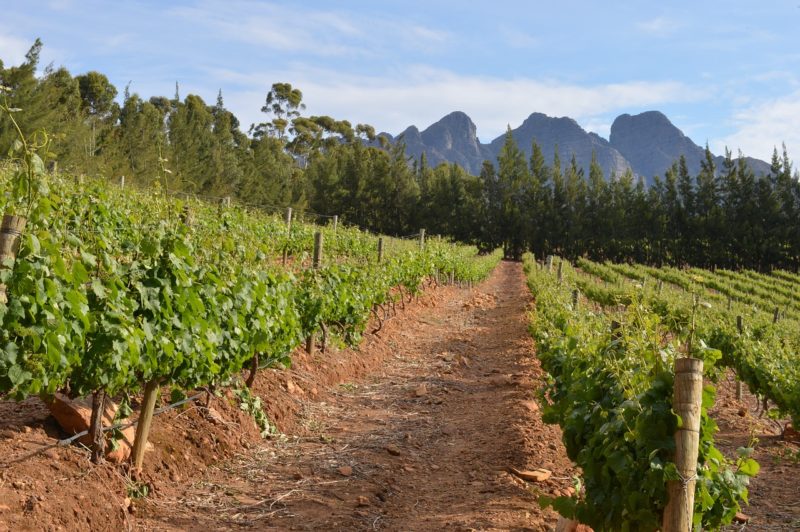
Just minutes outside of Cape Town, rolling vineyards offer tastings of award-winning wines.
A wine safari combines two of South Africa’s greatest treasures: the bounty of the spectacular Cape wine region and its excellent regional cuisine—an exotic mix of Dutch, French, British, Portuguese, German, and Malay influences. Within easy reach of Cape Town, both major wine estates and the small, sophisticated towns of Stellenbosch, Paarl, and Franschhoek (and to a lesser degree Robertson and McGregor) have roots dating back to Dutch and French Huguenot settlement in the mid-1600s. Gracious Cape Dutch homesteads are set against the granite-peaked Drakenstein mountains, forests, and rolling vineyards that produce a range of varietals, most notably cabernet sauvignon and pinotage among the reds and sauvignon blanc and chenin blanc among the whites.
Franschhoek (“French corner” in Afrikaans) is the gourmet capital of South Africa, and it alone boasts more than 40 wineries and award-winning restaurants as well as memorable inns and boutique hotels. The country’s very first vineyards were planted in Constantia, just 20 minutes south of Cape Town. The oldest wine estate in the country was originally owned here by the first governor of the Dutch Colony in the 17th century.
Rovos Rail and the Blue Train
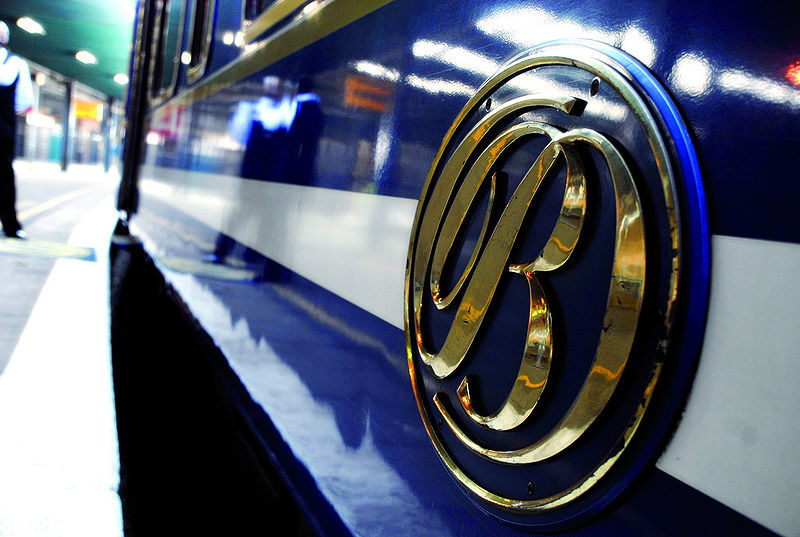
The Blue Train, a five-star “hotel-on-rails,” travels overnight from Cape Town to Pretoria with a stop in Johannesburg.
Tiny planes transport safari-goers from park to park bestowing bird’s-eye views of the vast landscapes in between. For those with time to slow down, a rail journey permits entry to a world not many see, and in South Africa, you have two exemplary train-travel choices. The Rovos Rail, which features some cars that date to the late 1800s, is a throwback to the glory days of steam travel, when sleeper coaches and carriages were built with ornately carved embellishments and serviced by tuxedoed porters. The Blue Train is all contemporary luxury and efficiency, like a slender and sleek hotel kitted out with lacquer, leather, and African prints. Both roll along from Cape Town northeast to Johannesburg and Pretoria, a journey of nearly 1,000 miles across the starkly beautiful plains of the Great Karoo and the canyons of the Highveld in the center of South Africa.
Rovos Rail offers a number of itineraries that can be mixed and matched according to time and budget. Exceptionally large suites are out fitted with queen-size beds and private bathrooms. Dressing for dinner on the aptly named Pride of Africa is only fitting when a meal of Cape rock lobster, paired with any of South Africa’s nest wines, awaits.
The Blue Train first took to the rails in 1946. As stylish and comfortable as the original trains were, passengers will appreciate their new generation of sophisticated railcars, introduced in the late 1990s. Private bathrooms are decked out with marble vanities and walls; suites include full entertainment centers, while meals feature local wines in crystal glassware and dishes that will satisfy the most discriminating palates.
Greater Kruger Park Area
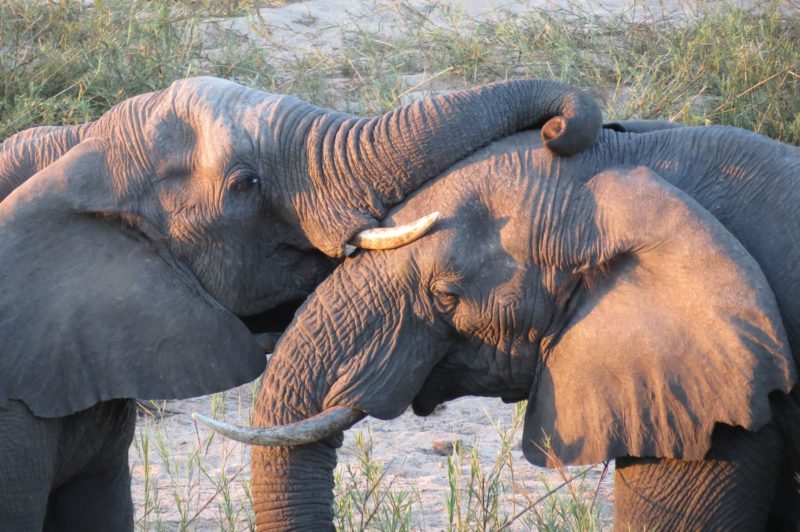
Safari-goers will find some of the best Big Five viewing in Kruger National Park and its periphery.
Some of South Africa’s best game-viewing can be found in the expanse of land west of Kruger National Park. Sharing an unfenced border with the enormous park, these collectively owned and managed private reserves and concessions are home to a remarkable variety of wildlife but don’t get the human traffic that typically follows it, so you’ll very likely never share the surrounding terrain with more than one or two other jeeps in the course of each exhilarating drive. The animals are not tame, but they are accustomed to the sight of vehicles and let them approach fairly close. Rangers and trackers are educated and entertaining, with a wealth of experience and a passion for the bush. They will drive you through various habitats and ecosystems, from rolling hills to open grasslands and thick forests. Around every turn in the dirt road a surprise awaits: slinking leopards, cheetahs, endangered African wild dogs, and magnificent black and white rhinos, not to mention 500 species of birds, thriving prides of lions, and scores of zebras, buffalo, hippos, giraffes, and elephants (13,000 of them!).
Garden Route
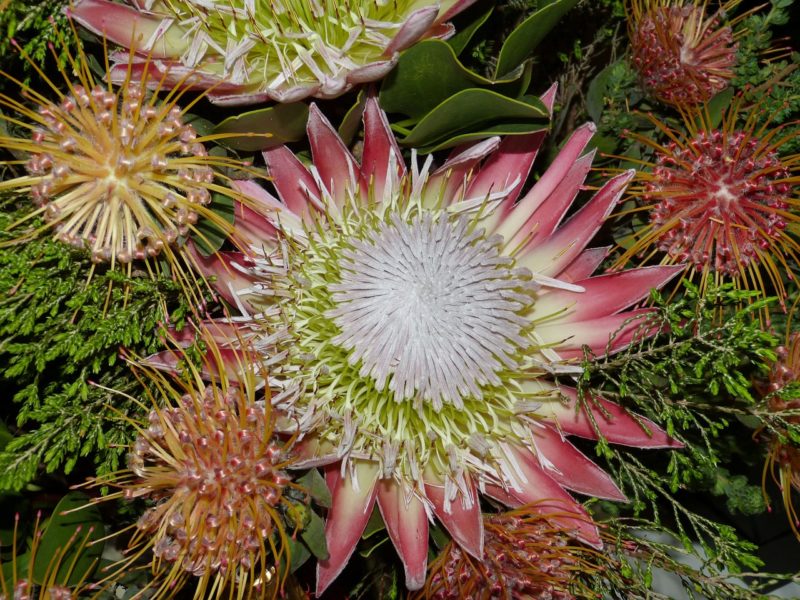
Plan a road trip through this densely vegetated stretch of stunning Western Cape coastline rich in natural beauty.
This 130-mile stretch that begins east of Cape Town and runs along Africa’s southernmost tip is a coastal terrain of lakes, mountains, forests, and golden beaches. Indian Ocean waters just offshore are full too—of penguins, dolphins, and migrating whales that have traveled here to breed and calve. Beautiful year-round, the area is positively glorious between July and October, when an unequaled diversity of wild flowers, supported by a unique combination of soil and climate, bursts into bloom and gives full meaning to the drive’s name: “The Garden Route.” See it by hiking any of the hundreds of miles of trails or on leisurely drives through forests and parkland.
The charming town of Knysna has a cliff-fringed harbor replete with sailboats, a colorful community of artists, and plenty of well-heeled vacationers. Sample the area’s renowned oysters during its event-packed July oyster festival, when you can slurp down some of the bivalves with garnishes from caviar to mango and a chaser of a cold Mitchell’s, the local ale. Follow walking trails out along the coast to view the Heads, rock sentinels at the mouth of the lagoon.
Although not officially part of the Garden Route, visit the coastal city of Hermanus for more whale-spotting. Or head out in the direction of nearby Dyer Island (a breeding colony for African penguins and Cape fur seals), where shark diving (safely ensconced within specially made cages) provides unparalleled thrills.
And don’t forget to check out the book!
 About the Book:
About the Book:
The world’s bestselling travel book is back in a more informative, more experiential, more budget-friendly full-color edition. A #1 New York Times bestseller, 1,000 Places reinvented the idea of travel book as both wish list and practical guide. As Newsweek wrote, it “tells you what’s beautiful, what’s fun, and what’s just unforgettable—everywhere on earth.” And now the best is better. There are 600 full-color photographs. Over 200 entirely new entries, including visits to 28 countries like Lebanon, Croatia, Estonia, and Nicaragua, that were not in the original edition. There is an emphasis on experiences: an entry covers not just Positano or Ravello, but the full 30-mile stretch along the Amalfi Coast.
Every entry from the original edition has been readdressed, rewritten, and made fuller, with more suggestions for places to stay, restaurants to visit, and festivals to check out. And throughout, the book is more budget-conscious, with starred restaurants and historic hotels such as the Ritz, but also moderately priced gems that don’t compromise on atmosphere or charm.
The world is calling. Time to answer.
Buy the Book
Amazon | B&N | Indiebound | Workman

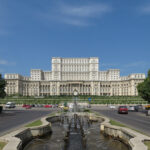
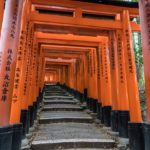
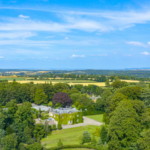
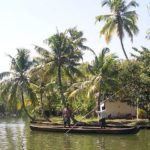
No Comments